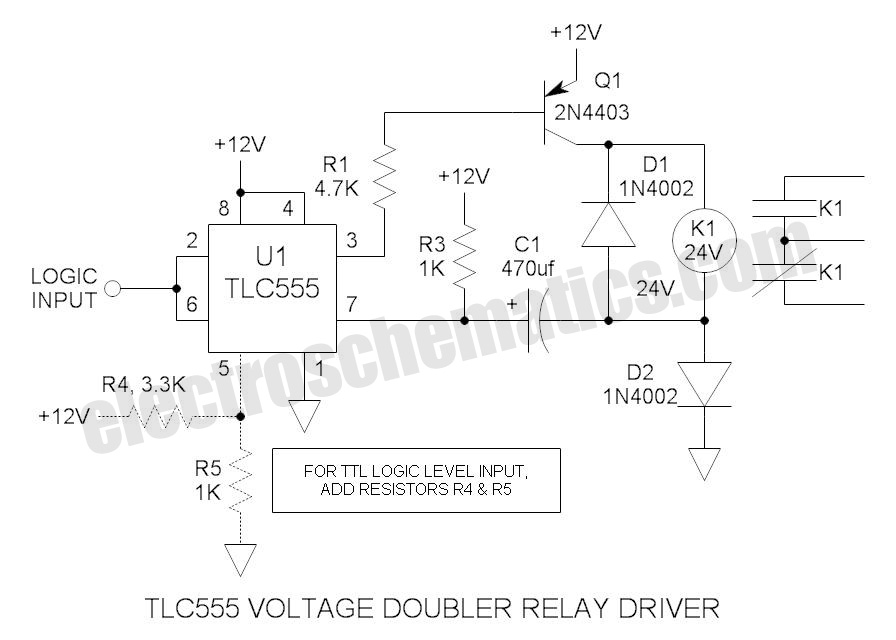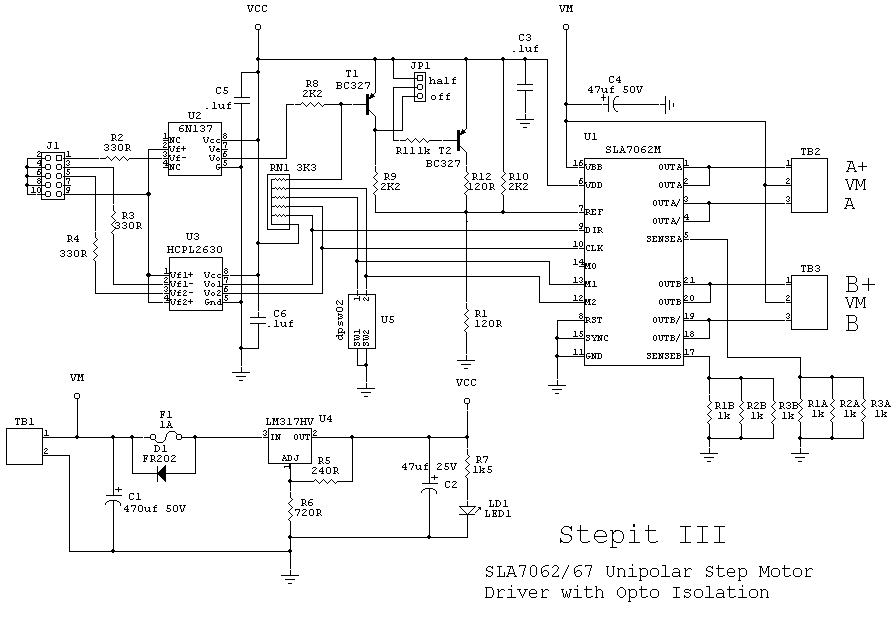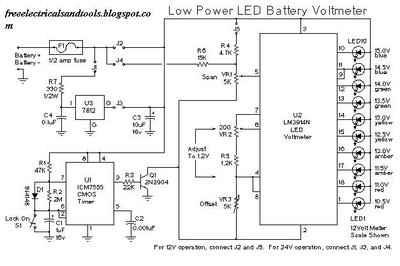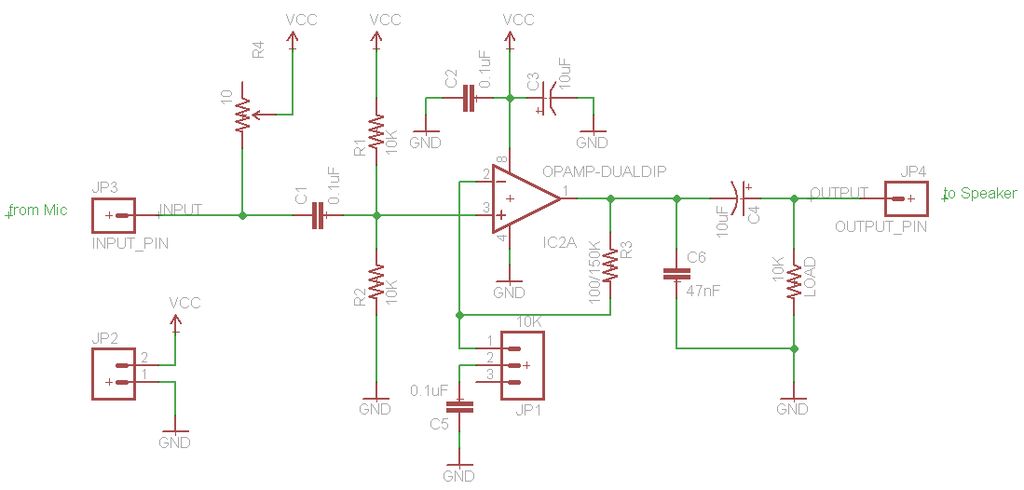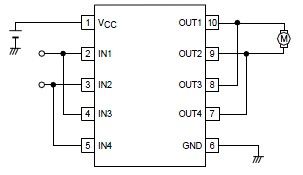
Led bar-graph driver
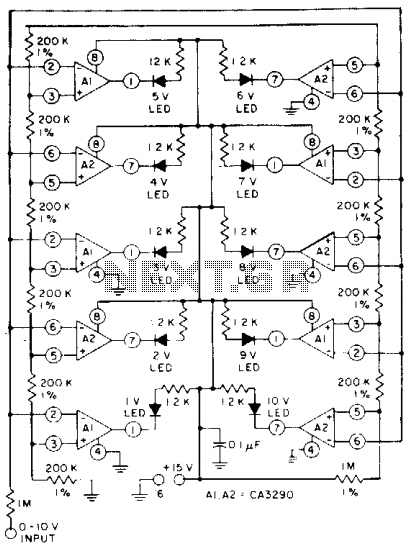
The circuit utilizes CA3290 BiMOS dual voltage comparators. The non-inverting inputs of A1 and A2 are connected to a voltage divider reference. The input signal is applied to the inverting inputs. LEDs are activated when the input voltage reaches the level set by the reference divider.
The circuit design employs two CA3290 BiMOS dual voltage comparators, configured to compare an input signal against a reference voltage derived from a voltage divider. The non-inverting inputs of the comparators, labeled A1 and A2, are connected to the output of the voltage divider, which establishes a stable reference voltage. The inverting inputs receive the variable input signal that is to be monitored.
When the input voltage exceeds the reference voltage provided by the divider, the output of the comparators transitions from a low state to a high state. This change in output is used to control the state of the connected LEDs. Specifically, the LEDs will illuminate when the input voltage reaches or surpasses the reference voltage level set by the voltage divider, providing a visual indication of the input signal's status.
The voltage divider can be designed using two resistors, R1 and R2, connected in series across a supply voltage. The junction between R1 and R2 provides the reference voltage to the non-inverting inputs of the comparators. The choice of resistor values will determine the threshold voltage at which the LEDs will turn on, allowing for customization of the circuit's response to varying input signals.
In summary, this circuit effectively utilizes the CA3290 comparators to create a simple voltage monitoring system that activates LEDs based on the comparison of an input voltage with a predefined reference voltage. The design is straightforward and can be adapted for various applications requiring voltage level indication.The circuit uses CA3290 BiMOS dual voltage comparators. Non-inverting inputs of A1 and A2 are tied to voltage divider reference. The input signal is applied to the inverting inputs. LEDs are turned "on" when input voltage the reaches the voltage on the reference divider.
The circuit design employs two CA3290 BiMOS dual voltage comparators, configured to compare an input signal against a reference voltage derived from a voltage divider. The non-inverting inputs of the comparators, labeled A1 and A2, are connected to the output of the voltage divider, which establishes a stable reference voltage. The inverting inputs receive the variable input signal that is to be monitored.
When the input voltage exceeds the reference voltage provided by the divider, the output of the comparators transitions from a low state to a high state. This change in output is used to control the state of the connected LEDs. Specifically, the LEDs will illuminate when the input voltage reaches or surpasses the reference voltage level set by the voltage divider, providing a visual indication of the input signal's status.
The voltage divider can be designed using two resistors, R1 and R2, connected in series across a supply voltage. The junction between R1 and R2 provides the reference voltage to the non-inverting inputs of the comparators. The choice of resistor values will determine the threshold voltage at which the LEDs will turn on, allowing for customization of the circuit's response to varying input signals.
In summary, this circuit effectively utilizes the CA3290 comparators to create a simple voltage monitoring system that activates LEDs based on the comparison of an input voltage with a predefined reference voltage. The design is straightforward and can be adapted for various applications requiring voltage level indication.The circuit uses CA3290 BiMOS dual voltage comparators. Non-inverting inputs of A1 and A2 are tied to voltage divider reference. The input signal is applied to the inverting inputs. LEDs are turned "on" when input voltage the reaches the voltage on the reference divider.

